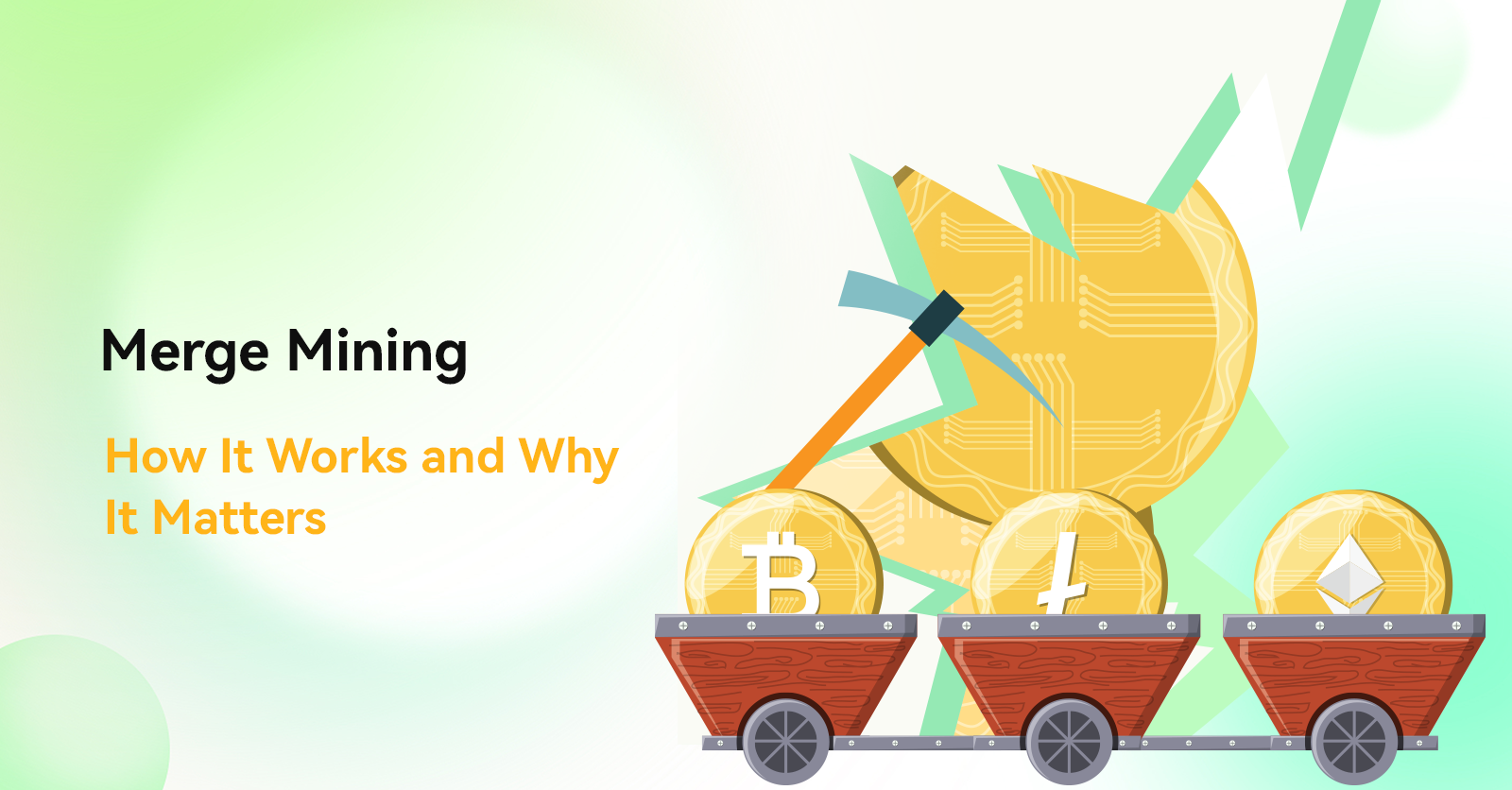
AI Computing Power vs. Crypto Computing Power: Differences and Future Trends
Apr 04 2025
This blog will explore the differences between AI computing and crypto mining, their unique characteristics, and their future trends.
The demand for computing power in the digital world is growing at an unprecedented pace, driven primarily by two significant forces: artificial intelligence (AI) computing and cryptocurrency mining power. AI models are increasingly complex and resource-intensive, while crypto mining remains a vital pillar of high-performance computing. This blog will explore the differences between AI computing and crypto mining, their unique characteristics, and their future trends.
Evolution of the Computing Power Market
In the past decade, the demand for computing power has significantly evolved. Initially driven by cloud computing and data analytics, today's computational demands are increasingly influenced by advanced AI models such as ChatGPT, large language models (LLMs), and intensive AI training tasks. These AI workloads require extremely high computational power, typically relying on high-performance GPUs and specialized chips. According to data from Precedence Research, the global AI market was valued at approximately $119.78 billion in 2022 and is projected to reach $1.59 trillion by 2030, growing at a compound annual growth rate (CAGR) of 38.1%.
Meanwhile, cryptocurrency mining has also become a significant component of computing power consumption. Initially reliant on GPUs for mining, the industry has gradually shifted toward specialized Application-Specific Integrated Circuits (ASICs) to improve efficiency. Despite market volatility, cryptocurrency mining, particularly Bitcoin mining, continues to maintain extensive dedicated facilities that perform repetitive, high-intensity hashing computations.
In recent years, the computing power market has undergone notable changes, primarily driven by surging demand for artificial intelligence (AI) and high-performance computing (HPC). Facing volatility and uncertainty in mining profitability, several large-scale mining companies have shifted their focus toward AI and HPC to seek more stable revenue streams.
CoreWeave, initially focused on cryptocurrency mining, has fully transformed into an AI infrastructure provider, operating multiple data centers specifically designed for AI model training and inference. Similarly, mining companies like Bitdeer have also leveraged their existing infrastructure to enter the AI data center business, catering to the growing demand for AI computing. These shifts reflect the dynamic nature of the computing power market and strategic adjustments by companies seeking diversification and sustainable development amid emerging technological trends.
Differences Between AI Computing Power and Crypto Computing Power
AI computing primarily relies on GPUs, TPUs, and processors specifically designed for AI, handling dynamic and complex computational tasks. It features dynamic, high-bandwidth, low-latency computing needs essential for real-time inference and continuous training tasks. The demand for AI computing is steadily growing, driven by technological advancements and widespread industry adoption of AI.
In contrast, crypto mining mainly uses ASICs and GPUs (depending on the specific blockchain), specialized for repetitive hashing operations required for blockchain security. It involves repeatedly performing computationally intensive tasks to solve cryptographic puzzles, validating and securing blockchain transactions. Profitability and demand significantly fluctuate based on market cycles, cryptocurrency prices, block reward adjustments, and energy costs.
| Feature | AI Computing Power | Crypto Computing Power |
| Market Demand | Stable growth, driven by technology adoption | Highly volatile, influenced by market cycles |
| Revenue Stability | Generally stable and predictable | Highly cyclical and speculative |
| Infrastructure Needs | Advanced cooling, high power density | Robust, cost-effective power solutions |
| Energy Consumption | High and growing rapidly | Extremely high, but can be optimized |
| Sensitivity to Energy Cost | High but offset by stable revenue streams | Very high; profitability directly tied to electricity cost |
| Industry Examples | NVIDIA, CoreWeave, xAI | Bitdeer, Riot Blockchain, Marathon Digital |
Data Center Transformation: How Mining Data Centers Enter AI Computing
Crypto mining enterprises are increasingly diversifying into AI computing, leveraging existing infrastructure. Mining facilities typically possess ample power supplies, robust cooling systems, and suitable space for AI computing, making this transition natural and feasible.
Companies such as Bitdeer and CoreWeave have successfully transitioned from traditional mining operations to GPU cloud services, capturing lucrative markets such as AI computing and rendering.
Infrastructure Upgrades
Transitioning from mining to AI computing requires strategic upgrades in cooling systems, power supply, and data center layouts to meet the higher energy and heat dissipation demands of GPUs.
Hybrid Models
Can data centers effectively manage both AI computing and mining workloads simultaneously? Hybrid models are becoming increasingly popular, allowing facilities to dynamically allocate resources based on profitability, workload priority, and market conditions.
Future Trends: Competition or Synergy?
As major mining companies such as Bitdeer increasingly invest in AI computing infrastructure, the industry is standing at a crossroads. Detailed comparative analysis shows that revenues from AI computing are relatively stable, while cryptocurrency mining remains attractive during bullish market cycles.
However, the rapid growth in AI computing demand is placing unprecedented pressure on electrical infrastructure. According to data from the U.S. Department of Energy, data centers consumed approximately 4.4% of U.S. electricity in 2023, and this proportion is expected to rise to between 6.7% and 12% by 2028. This growth, driven primarily by AI data centers, has caused electricity demand to surge dramatically. Reports indicate that Oncor Electric in Texas received power demand requests as high as 119 gigawatts, while PPL Corporation in Pennsylvania received requests exceeding 50 gigawatts, far beyond their existing power generation capacity.
This spike in demand has led to rising electricity costs. In New Jersey, due to soaring electricity demand and rising energy prices, millions of Americans are expected to see their monthly electricity bills increase by more than $20. Additionally, limitations in power supply have posed challenges to the expansion of AI data centers. For example, Elon Musk's xAI encountered power supply shortages when building a supercomputer in Memphis.
Furthermore, the increasing demand for AI computing is expected to drive up energy costs for mining farms, potentially constraining their future expansion. However, the integration of blockchain and AI also presents new opportunities, such as smart contract automation and AI-driven mining optimization, indicating that the future may not be purely competitive but instead mutually beneficial. Therefore, the AI computing and cryptocurrency mining industries must jointly tackle challenges of tightening electrical resources and rising costs, exploring sustainable solutions to achieve long-term coexistence and growth.
Strategic Choices for Miners
Miners face critical strategic decisions: should they diversify into AI computing or remain focused on crypto mining? Flexible infrastructure investments and adaptive operational models are essential to capitalize on opportunities in both domains. Over the next two to five years, closer integration of AI and blockchain technologies in the computing power sector is expected. Facilities capable of adapting flexibly or merging these two domains will define the future of digital infrastructure.
*Information provided in this article is for general information and reference only and does not constitute nor is intended to be construed as any advertisement, professional advice, offer, solicitation, or recommendation to deal in any product. No guarantee, representation, warranty or undertaking, express or implied, is made as to the fairness, accuracy, timeliness, completeness or correctness of any information, or the future returns, performance or outcome of any product. Bitdeer expressly excludes any and all liability (to the extent permitted by applicable law) in respect of the information provided in this article, and in no event shall Bitdeer be liable to any person for any losses incurred or damages suffered as a result of any reliance on any information in this article.
© 2025 Bitdeer. All rights reserved


